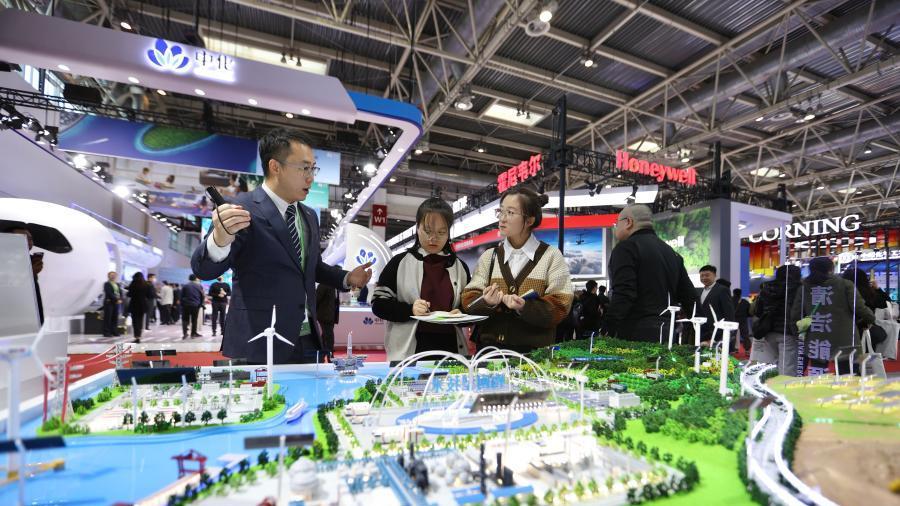China-made modules depart for "artificial sun" in France
GUANGZHOU, Nov. 29 (Xinhua) -- Forty-eight blanket shield block modules departed from China on Friday, heading to France for the construction of the world's largest experimental tokamak nuclear fusion reactor.
Departing from the southern Chinese city of Guangzhou, Guangdong Province, the components are the first of their kind destined for the International Thermonuclear Experimental Reactor (ITER) project in southern France.
The facility, sometimes referred to as "artificial sun," is being built by China, the European Union, India, Japan, the Republic of Korea (ROK), Russia and the United States to test the feasibility of fusion as a large-scale and clean source of energy.
The ITER tokamak uses a magnetic cage to confine, shape and control the super-hot plasmas to make fusion reactions possible.
Luo Delong, deputy direct general of ITER organization, said that ITER is a long-term project that primarily focuses on the development of nuclear fusion energy. This type of energy is considered an ideal solution for the future energy needs of humankind, as it has an inexhaustible fuel supply, eco-friendly, and relatively safe.
The blanket shield block modules are critical vacuum components that provide neutron shielding and heat conduction under high thermal loads. They protect the vacuum chamber, external equipment, and personnel from radiation, ensuring the reactor's stable operation.
Chen Jiming, chief scientist of Southwestern Institute of Physics, China National Nuclear Corporation (CNNC), explained that the blanket shield modules are similar to the "refractory bricks" of a furnace.
The primary functions of the modules are to shield against 14 MeV high-energy neutrons and transfer hundreds of megawatts of nuclear heat outside the system via cooling water. This ensures the protection of peripheral equipment while maintaining component operations within permissible temperature limits, Chen added.
China and the ROK are each responsible for the manufacturing of 220 blanket shield block modules. The first 48 modules were produced by Dongfang Electric Corporation.
Wang Weidong, chairman of Dongfang Electric (Guangzhou) Heavy Machinery Co., Ltd., said that an additional 172 blanket shield modules are expected to be delivered by 2027.
"China's manufacturing plays a pivotal role in promoting the sustainable development of global clean energy," Wang said.
Looking to the future, the modules also have the potential to produce tritium, a crucial fuel used for controlled nuclear fusion. There is essentially no tritium on Earth, which is far from meeting the needs of fusion energy development, according to Chen.
Though the current project doesn't involve tritium production, the research team plans to further explore its functionality in the future to enable tritium regeneration and better achieve sustainability in clean energy utilization, Chen added.
Photos
Related Stories
- Chinese artificial heart powered by rocket technology being tested on humans
- Artificial reef building in Yangtze estuary restores aquatic ecosystem
- Chinese scientists develop artificial spider silk
- China’s 2,500-year-old ancient lacquer bed restored
- Young man makes 10,000 yuan daily by making artificial clouds
- Artificially-bred crested ibis released to the wild in NW China
- 50,000 artificial sturgeons born in China
- Artificial insemination planned for giant panda
- Tibet releases over 20,000 artificial endangered fishes
- Lhasa welcomes first artificial precipitation
Copyright © 2024 People's Daily Online. All Rights Reserved.









